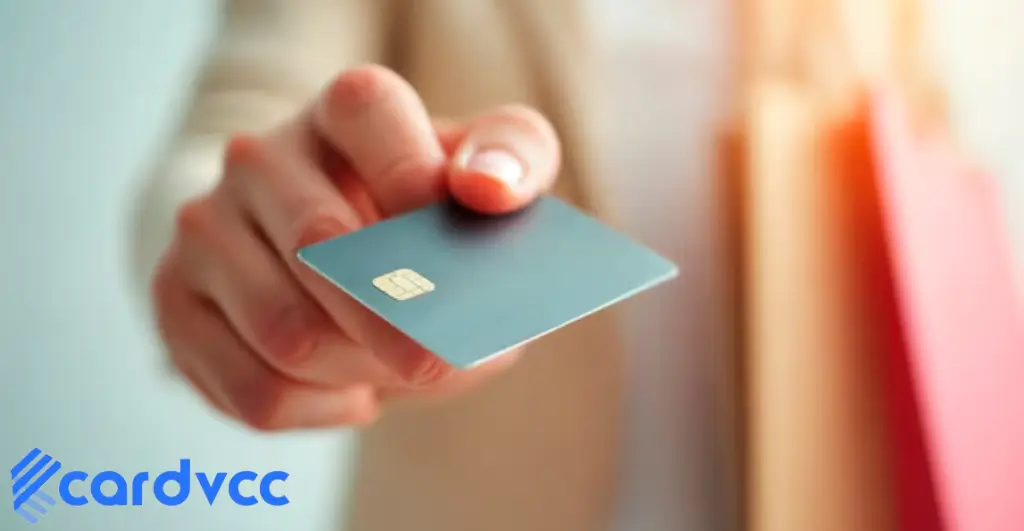To dispute a charge on your Chase debit card, call Chase customer service or log in to your online account. Provide details of the disputed transaction.

Disputing a charge on your Chase debit card is a straightforward process. Knowing the steps can save you time and hassle. Start by gathering all necessary information about the charge, including transaction details and any relevant receipts. Contact Chase customer service immediately or access your account online to report the issue.
Quick action is crucial to resolving disputes effectively. Chase will then investigate the claim and keep you informed throughout the process. Understanding your rights and the dispute procedure can help ensure a smooth resolution. This guide will walk you through each step for a seamless experience.
Identify The Unauthorized Charge
To dispute a charge on your Chase debit card, you must first identify the unauthorized transaction. This step is crucial for a successful dispute. Pay close attention to your account activity and transaction details.
Review Your Account Statements
Begin by reviewing your account statements. Look for any unfamiliar charges. Make sure you check both recent and older statements.
| Statement Period | Unfamiliar Charges |
|---|---|
| Last Month | Check all transactions |
| Two Months Ago | Look for unknown charges |
Check Transaction Details
Next, check the transaction details. Click on each transaction to see more information. Verify the date, time, and merchant name.
- Click on each transaction.
- Verify the date and time
- Check the merchant name
If you find a charge you don’t recognize, it’s likely unauthorized. Take note of these details for your dispute.
Gather Necessary Information
Before disputing a charge on your Chase debit card, gather all the needed information. This ensures a smooth and successful dispute process. Being well-prepared helps you present a strong case. Here are the key steps to gather the necessary information.
Collect Transaction Receipts
Start by collecting all related transaction receipts. These receipts provide crucial evidence. They show details like the purchase amount, date, and merchant name.
- Locate physical or digital receipts.
- Ensure they are clear and readable.
- Organize them by date and merchant.
Having these receipts will strengthen your dispute claim. They prove your case and help Chase verify the transaction details.
Note Important Dates
Make a note of all important dates. This includes the date of the transaction and the date you noticed the error. Also, note the date you contacted the merchant.
| Event | Date |
|---|---|
| Transaction Date | MM/DD/YYYY |
| Error Notice Date | MM/DD/YYYY |
| Merchant Contact Date | MM/DD/YYYY |
Keeping track of these dates is essential. It helps you stay organized and provide accurate information to Chase.
Contact Chase Customer Service
Disputing a charge on your Chase debit card can seem difficult. But contacting Chase customer service can make it easier. Follow these steps to get the help you need.
Find The Customer Service Number
First, you need to find the right number. Visit the Chase website. Look for the customer service section. You can also check the back of your debit card. The number is usually printed there. Keep this number handy for quick access.
Prepare Your Account Information
Before you call, gather your account details. This includes:
- Your full name
- Your account number
- The date and amount of the disputed charge
- Any other relevant information
Having this information ready will speed up the process. It helps the customer service representative assist you faster. Make sure you have a pen and paper ready. You may need to write down important details during the call.
Remember, the Chase team is there to help you. Stay calm and polite. Explain your issue clearly. This will make it easier for them to resolve your dispute.
Explain The Dispute
Disputing a charge on your Chase debit card can feel overwhelming. By explaining the dispute clearly, you increase your chances of a positive outcome. Follow these steps to ensure your dispute is well-documented and understood.
Describe The Issue Clearly
Clearly describing the issue is crucial. Start by noting the date of the transaction. Identify the merchant and the amount in question. Use simple and direct language. For example:
- Date: January 1, 2023
- Merchant: ABC Retail
- Amount: $100
Explain why you are disputing the charge. Did you receive the wrong item? Was the service not provided? Clear descriptions help Chase understand the problem.
Provide Supporting Evidence
Supporting evidence strengthens your dispute. Gather all relevant documents. These can include:
- Receipts
- Email correspondence
- Photos of damaged goods
Attach this evidence when filing your dispute. Ensure it is organized and clearly labeled. This makes it easier for Chase to review your case.
| Type of Evidence | Description |
|---|---|
| Receipt | Proof of purchase from the merchant |
| Email Correspondence | Communications with the merchant |
| Photos | Images of the received product |
With a clear issue description and strong supporting evidence, your dispute has a higher chance of success. Remember to keep your explanations brief and to the point.
Follow Up On Your Dispute
Following up on your dispute is crucial. It ensures that the process goes smoothly. Proper follow-up helps resolve issues quickly. Here’s how to effectively follow up on your Chase debit card dispute.
Monitor Your Account
Regularly check your Chase account for updates. Look for any changes or responses regarding your dispute.
- Log in to your Chase account daily.
- Check your email for updates from Chase.
- Review your account statements for any resolved charges.
Keeping an eye on your account ensures you spot updates quickly. This helps you stay informed about the status of your dispute.
Respond To Chase Inquiries
Chase may contact you for more information. Responding quickly helps speed up the process.
- Answer calls from Chase representatives.
- Check your email for requests from Chase.
- Provide any requested documents promptly.
Quick responses ensure Chase has all the needed information. This helps resolve your dispute faster.
Understand The Investigation Process
Disputing a charge on your Chase debit card can seem daunting. However, understanding the investigation process helps ease your worries. Knowing what to expect makes the journey smoother. This guide will help you navigate the steps involved.
Timeframe For Resolution
Chase typically completes investigations within 30 days. In some cases, it may take up to 90 days. They will keep you informed throughout the process. You can check the status online or via phone.
If additional information is needed, Chase will contact you. Responding quickly helps speed up the process. Keeping all relevant documents handy is useful.
Potential Outcomes
Once the investigation is complete, there are a few possible outcomes:
- Charge Reversal: If the dispute is valid, the charge will be reversed.
- Partial Refund: Sometimes, only a partial refund is given.
- Charge Upheld: If the dispute is invalid, the charge remains.
Chase will notify you of the decision via mail or email. Make sure to check your communication channels regularly.
| Outcome | Description |
|---|---|
| Charge Reversal | You receive a full refund for the disputed charge. |
| Partial Refund | You receive a partial refund for the disputed charge. |
| Charge Upheld | The disputed charge remains on your account. |
Remember to review your statement regularly. It helps catch unauthorized charges early. Being proactive can save you time and stress.

How effective are virtual cards for scam protection?
Protecting your money is crucial. Scams are becoming more common. But what if there was a way to shop safely online? Virtual cards might be the answer.
What Are Virtual Cards?
Virtual cards are like regular credit or debit cards. But they only exist online. You can’t touch them, but you can use them for online purchases.
Benefits of Virtual Cards
Virtual cards offer many benefits. Here are a few:
- Enhanced Security: Virtual cards add an extra layer of security. They protect your main card details from being exposed.
- Limited Usage: You can set spending limits. This ensures you don’t spend more than you intend to.
- Temporary Numbers: Virtual cards can have temporary numbers. These numbers expire after a short time, reducing the risk of fraud.
- Easy Cancellation: If a virtual card is compromised, you can easily cancel it. This won’t affect your main card.
How Do Virtual Cards Work?
Virtual cards are simple to use. Here’s a step-by-step guide:
- Sign up for a virtual card service. Cardvcc is a popular choice.
- Create a virtual card. You can do this instantly on Cardvcc.
- Use the virtual card for online purchases. Enter the virtual card details at checkout.
- Monitor your transactions. Keep an eye on your spending and any unusual activity.
Protection Against Scams
Virtual cards are effective against scams. Here’s how:
- Masked Card Details: Your real card details are hidden. This makes it harder for scammers to steal your information.
- Limited Exposure: Since virtual cards can be temporary, they limit exposure. Even if a scammer gets your virtual card number, it won’t last long.
- Spending Limits: You can set low spending limits. This minimizes the amount a scammer can steal.
Digital Credit Cards: Benefits and Uses
Digital credit cards are similar to virtual cards. They also offer many benefits:
- Convenience: You can use them for online purchases without carrying a physical card.
- Security: They offer advanced security features, like encryption and tokenization.
- Control: You can easily manage and monitor your digital credit card transactions.
How to Create Virtual Credit Cards with Cardvcc
Cardvcc makes it easy to create virtual cards. Here’s how:
- Visit Cardvcc.
- Sign up for an account.
- Follow the instructions to create a virtual card.
- Start using your virtual card for online purchases.
Virtual cards are a smart way to protect against scams. They offer enhanced security, limited usage, and easy cancellation. Digital credit cards also provide convenience and control. By using services like Cardvcc, you can create virtual cards quickly and easily. Stay safe online by using virtual cards for your transactions.
Protect Your Account In The Future
Disputing a charge on your Chase debit card can be stressful. To avoid future issues, take proactive steps to protect your account. Here are some effective strategies to safeguard your finances.
Set Up Account Alerts
Activate account alerts for your Chase debit card. These alerts notify you of suspicious activities. You can customize alerts for:
- Large transactions
- International purchases
- ATM withdrawals
- Online purchases
Setting up alerts is easy. Log in to your Chase account and navigate to the alerts section. Choose the types of alerts you want. This way, you stay informed in real time.
Regularly Review Statements
Make it a habit to check your statements. Look for any unknown charges. Reviewing your statements helps catch errors early. If you find an issue, report it immediately.
To make reviewing easier, use the Chase mobile app. The app provides a convenient way to monitor your transactions. Set a reminder to review your statements weekly. This practice helps in maintaining a healthy account.
Keeping an eye on your account helps in detecting fraud. It also gives you peace of mind. Regular checks ensure your money is safe.
Know Your Rights
Understanding your rights is essential when disputing a charge on your Chase debit card. Knowing what protections are available can help you navigate the process smoothly.
Consumer Protection Laws
Consumer protection laws are in place to safeguard your financial transactions. These laws ensure that you are not held responsible for unauthorized charges.
- Electronic Fund Transfer Act (EFTA): This act protects consumers from errors in electronic transactions.
- Fair Credit Billing Act (FCBA): The FCBA provides guidelines for disputing billing errors.
These laws mandate that banks, like Chase, must investigate disputed transactions.
Chase’s Dispute Policy
Chase has a clear dispute policy for its debit card users. Knowing the steps can make the process easier.
- Contact Chase: Call the number on the back of your card.
- Provide Details: Give them the transaction details and reason for the dispute.
- Follow-up: Chase may need additional information to resolve the dispute.
Chase aims to resolve disputes within 10 business days. They might issue a provisional credit to your account.
If the dispute is resolved in your favor, the provisional credit becomes permanent.
| Step | Action |
|---|---|
| 1 | Contact Chase |
| 2 | Provide Details |
| 3 | Follow Up |
Understanding your rights and Chase’s policy makes disputing charges straightforward. Stay informed to protect your finances.

Frequently Asked Questions
How Do I Dispute A Charge On My Chase Debit Card?
To dispute a charge, log in to your Chase account. Select the transaction you want to dispute. Follow the prompts to submit your dispute.
How Long Does A Chase Dispute Take?
A Chase dispute typically takes around 30 to 60 days to resolve. The exact time may vary based on the case’s complexity.
Can I Dispute A Pending Charge On Chase?
You cannot dispute a pending charge. Wait until the charge posts to your account. Then, you can file a dispute.
What Documents Are Needed To Dispute A Charge?
You may need a receipt, invoice, or any communication with the merchant. These documents help support your dispute claim.
Conclusion
Disputing a charge on your Chase debit card is straightforward. Follow the steps outlined to ensure success. Contact Chase promptly for the best results. Keep records of all communications and documents. This ensures a smooth dispute process. Protect your finances by staying vigilant and informed.
Read More- How to Buy Reloadable VCC







